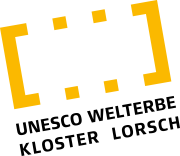
Anthropology room
Among the many archaeological finds preserved and researched in Lorsch, two groups of finds stand out in particular: human and animal remains. The study of skeletons is the task of anthropology in particular, but also of medicine and a number of natural sciences. In close connection with the Reiss-Engelhorn-Museums and the archaeometric facilities there, which are unique in Germany, the “science of man” traces the former inhabitants of the monastery. These were by no means only monks and canons, but also serfs, servants and maids, men, women and children – the “familia” of the monastery. What did they look like? Where did they come to Lorsch from? How old did they get, when did they live, what did they eat, what illnesses did they have, what work did they do? Many of these questions can be answered better and better and so it is already possible to get a little closer to the nameless individuals from the various burial sites of the monastery and its immediate surroundings.
An archaeozoological collection is currently under construction. Tens of thousands of small and minute particles of animal remains have been examined in recent years by archaeozoologist Kerstin Pasda (Kassel) and allow an initial analysis of the findings on the basis of a representative quantity of material. This can be assigned to the Early, High and Late Middle Ages due to its affiliation with dated layers. Since most of it is food waste, the food supply at such an important center of power as Lorsch Monastery once was can be determined more precisely. There may also be one or two imported foods. However, most of the animal remains come from the immediate surroundings of the monastery and thus allow a reconstruction of the environment and biodiversity many centuries ago.
